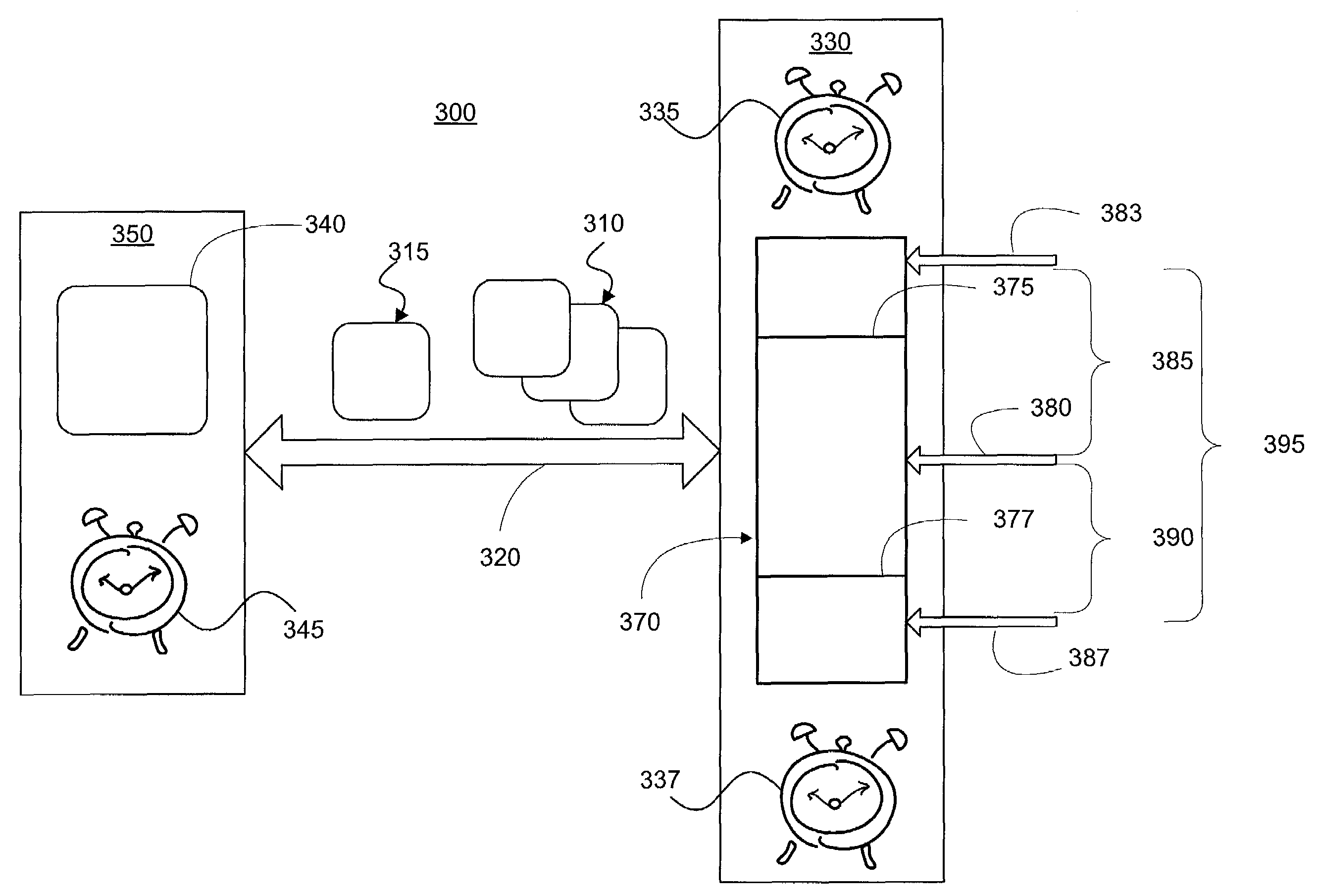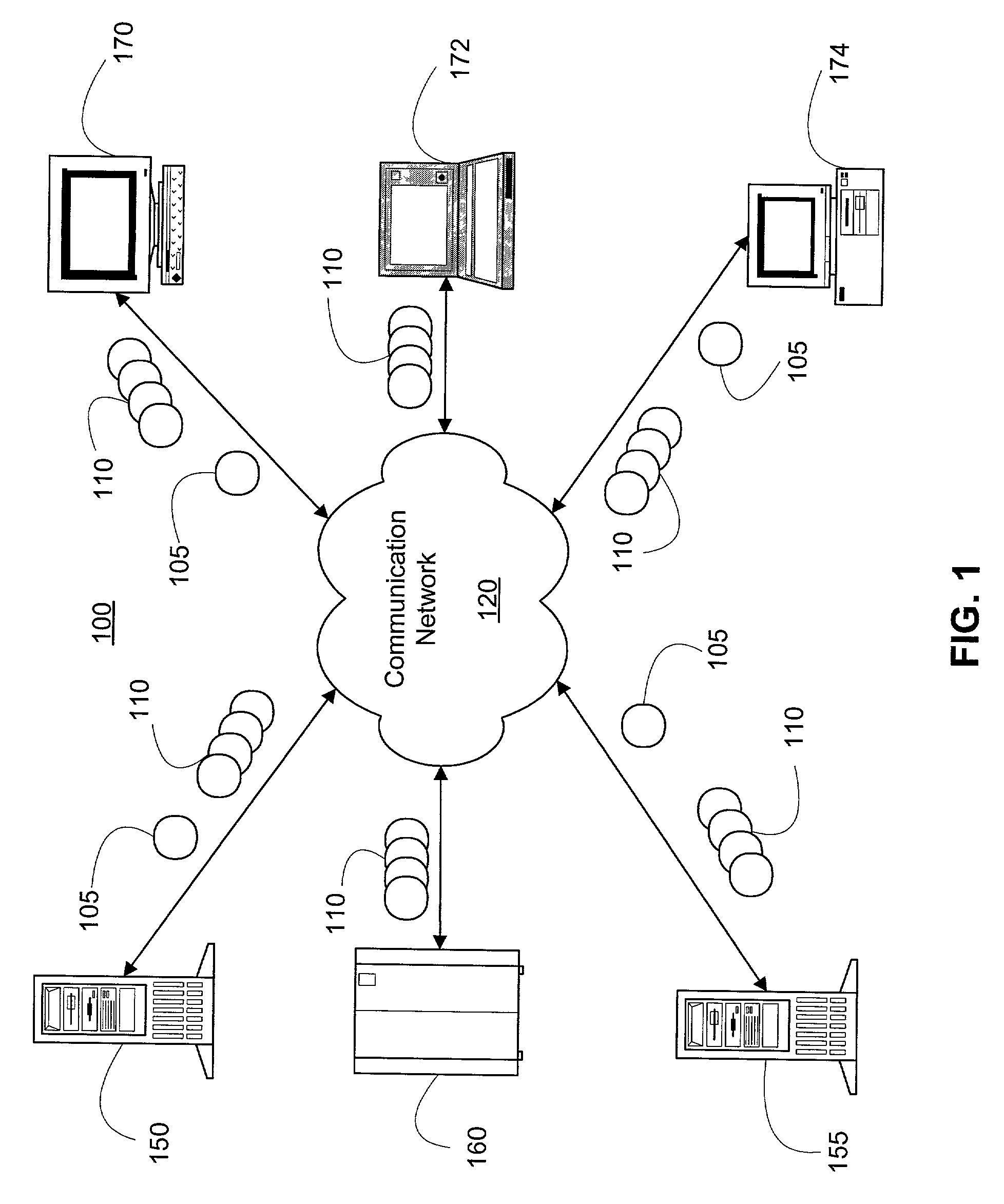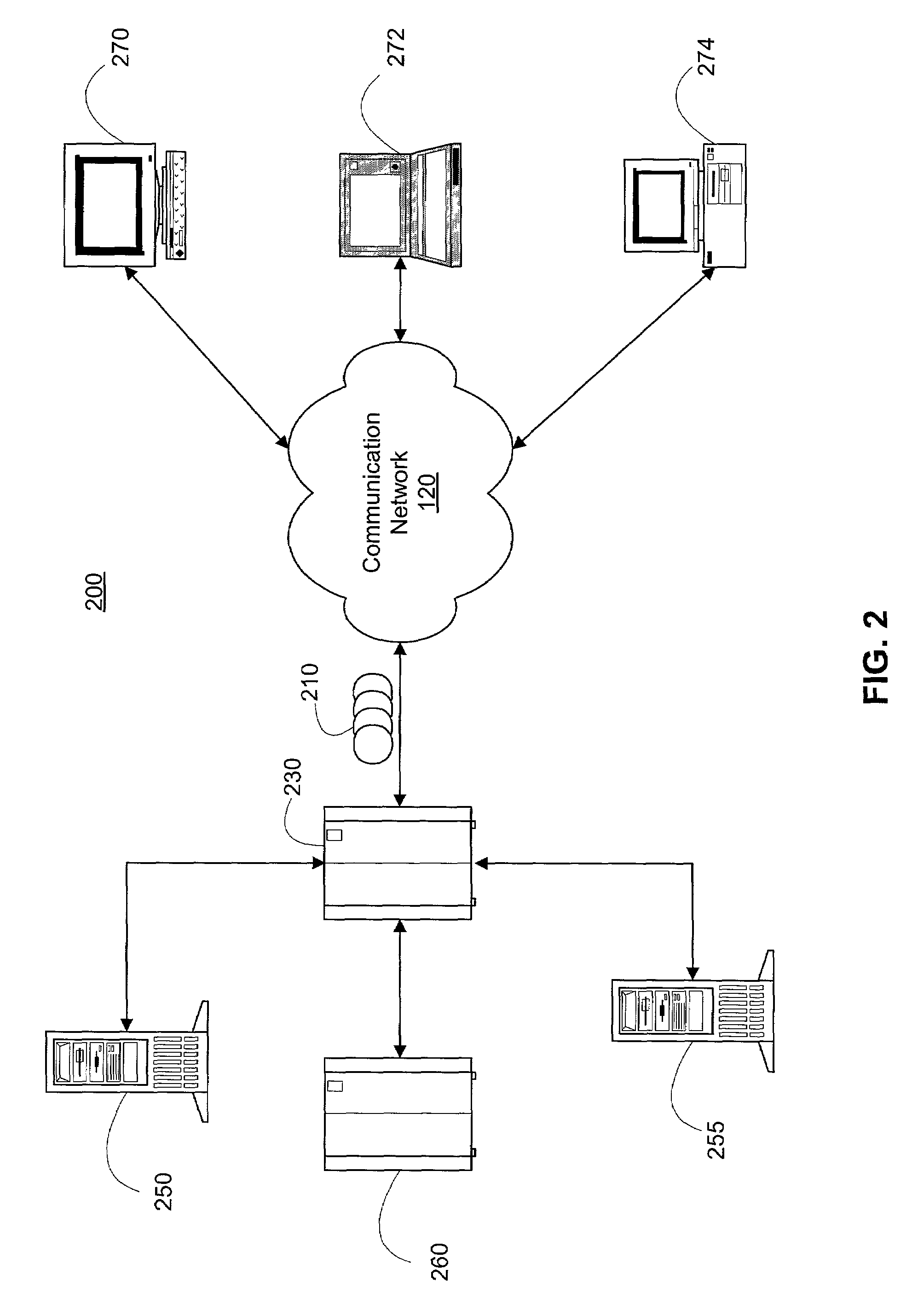Method and apparatus for dynamically selecting timer durations
a timer and duration technology, applied in the field of methods, can solve the problems of reducing the available network capacity between a specific source and destination, reducing capacity, and making the task of successfully streaming data across the network even more difficult, so as to increase reduce the transmission frequency or packet size, and increase the probability of data transmission
- Summary
- Abstract
- Description
- Claims
- Application Information
AI Technical Summary
Benefits of technology
Problems solved by technology
Method used
Image
Examples
Embodiment Construction
[0020]A method and apparatus for dynamically selecting timer durations is described, in which the delivery of data, such as streaming media (e.g., audio or video data), is adapted to provide reliable data delivery at a designated rate. Thus, a preferred embodiment of the present invention provides a source (i.e., a network switch or a server) that transmits data, such as streaming media, to a destination (i.e., a client) according to a dynamic rate timer (i.e., a bit-rate timer) where the timer regulates the transmission rate of the data being transmitted. The transmission rate may be adapted by changing various transmission characteristics, such as transmission frequency and / or the packet size.
[0021]Reference in the specification to “one embodiment” or “an embodiment” means that a particular feature, structure, or characteristic described in connection with the embodiment is included in at least one embodiment of the invention. The appearances of the phrase “in one embodiment” in v...
PUM
 Login to View More
Login to View More Abstract
Description
Claims
Application Information
 Login to View More
Login to View More - R&D
- Intellectual Property
- Life Sciences
- Materials
- Tech Scout
- Unparalleled Data Quality
- Higher Quality Content
- 60% Fewer Hallucinations
Browse by: Latest US Patents, China's latest patents, Technical Efficacy Thesaurus, Application Domain, Technology Topic, Popular Technical Reports.
© 2025 PatSnap. All rights reserved.Legal|Privacy policy|Modern Slavery Act Transparency Statement|Sitemap|About US| Contact US: help@patsnap.com



